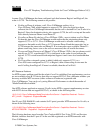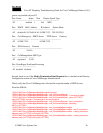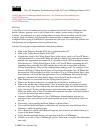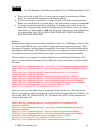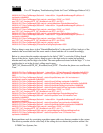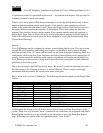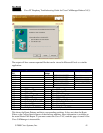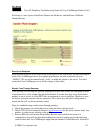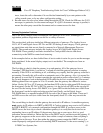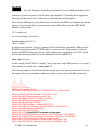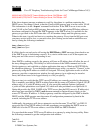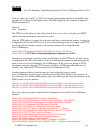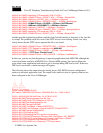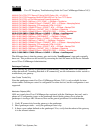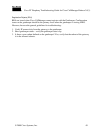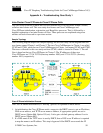
Cisco IP Telephony Troubleshooting Guide for Cisco CallManager Release 3.0(1)
© 2000 Cisco Systems, Inc. 43
trace, locate the call to determine if it was blocked intentionally by a route pattern or the
calling search space, or by any other configuration setting.
4. Reorder tones can also occur when calling through the PSTN. Check the SDI trace for Q.931
messages, in particular, for disconnect messages. If a Q.931 disconnect message is present, it
means the other party caused the disconnect and we cannot correct for that.
Gateway Registration Problems
One of the most common issues encountered with gateways on a Cisco CallManager is a
registration problem. Registration can fail for a variety of reasons.
This section deals with two similar but different categories of gateways. The Analog Access
AS-X, AT-X and Digital Access DT-24+ and DE-30+ belong to one category. These gateways
are stand-alone units that are not directly connected to a Network Management Processor
(NMP). The second category includes the Analog Access WS-X6624 and Digital Access
WS-X6608. These gateways are blades installed in a Catalyst 6000 chassis with direct
connectivity to the NMP for control and statusing.
In the examples below, we have bolded lines of text to make it easier for you to see the messages
being explained. In the actual display output, text is not bolded. The examples are from an
WS-X6624.
The first thing to check is that the gateway is up and running. All of the gateways have a
“heartbeat” LED that blinks 1-second on, 1-second off when the gateway software is running
normally. If this LED is not blinking at all, or blinking very rapidly, then the gateway software is
not running. Normally this will result in an automatic reset of the gateway. Also, it is normal for
the gateway to reset itself if it cannot complete the registration process after about 2 to 3 minutes.
So you may happen to look at the heartbeat LED while the device is resetting, but if the normal
blinking pattern does not appear in 10 to 15 seconds, then the gateway has suffered a serious
failure. On the AS-X or AT-X gateway, the heartbeat LED is the far right green LED showing on
the front panel. On the DT-24+ or DE-30+ gateway, it is the far left red LED on the top edge of
the card. On the Analog Access WS-X6624, it is a green LED inside the blade (not visible from
the front panel) on the far right card edge near the front. Finally, on the Digital Access
WS-X6608 there is a separate heartbeat LED for each of the 8 spans on the blade. There are 8
red LEDs across the card (not visible from the front panel) about 2/3 of the way towards the
back.
The second thing to check is that the gateway has received its IP address. A standalone gateway
must receive its IP address via DHCP or BOOTP. A Catalyst gateway may receive its IP address
by DHCP, BOOTP, or by manual configuration through the NMP. If you have access to the
DHCP server, the best way to check a standalone gateway is to verify that the device has an
outstanding lease on an IP address. If the gateway shows up on your server, this is a good
indication, but not definitive. Delete the lease at the DHCP server, and then reset the gateway. If
the gateway reappears on the server with a lease within a couple of minutes, then everything is
working fine in this area. If not, then either the gateway cannot contact the DHCP server (Is a
router improperly configured and not forwarding DHCP broadcasts? Is the server running?), or



